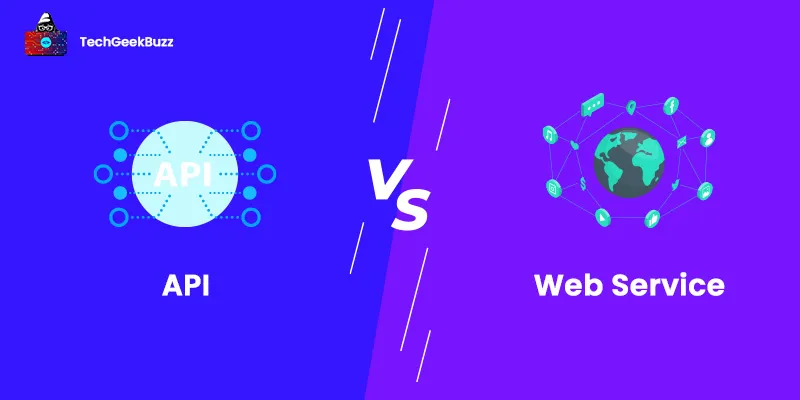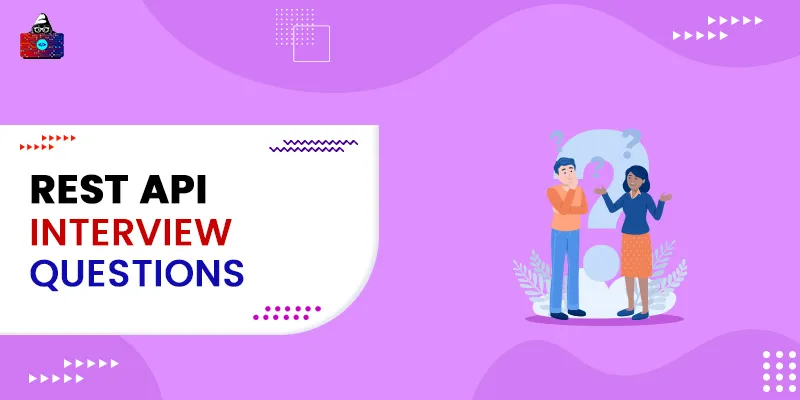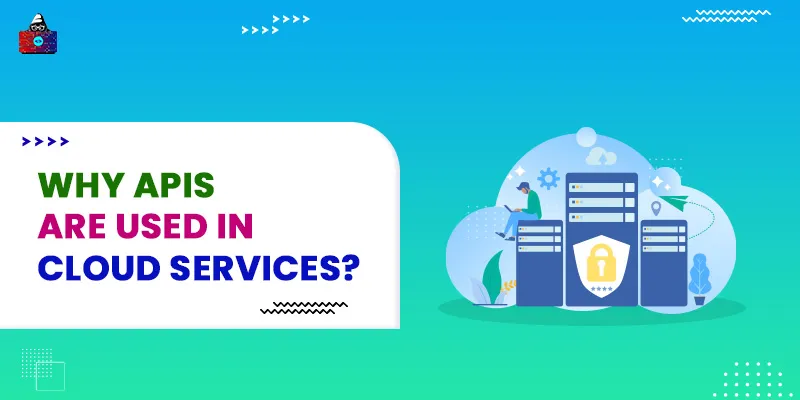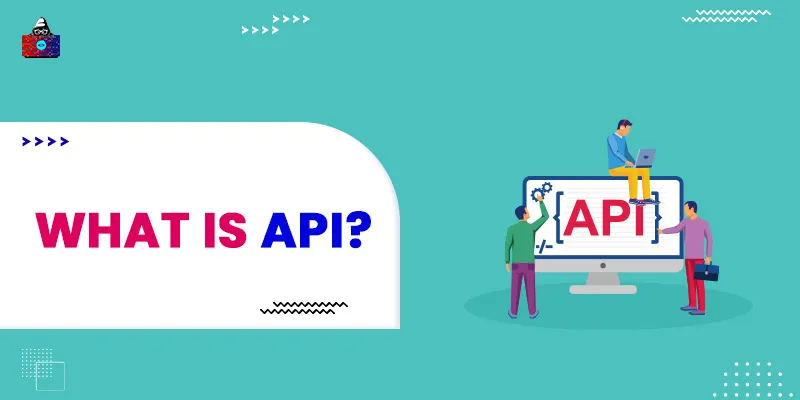APIs and web services play a vital role in modern software architecture. They both are the means of communication between two different applications. Many individuals often use these terms interchangeably. However, both these terms are different.
The primary difference between API and web service is that a web service facilitates communication between two systems or machines over a network. On the other hand, an API is a means of communication between two different applications that do not require any manual intervention.
Through this article, you will become familiar with many key differences between an API and a web service. However, before delving deep into the differences, let us first understand what APIs and web services are, along with their characteristics, advantages, and disadvantages.
So, let us begin!
What is an API?
API is an acronym for Application Programming Interface. It is an interface that acts as a mediator between two different computers or computer applications. In simple terms, it is a set of standard rules that allow communication between two different computers or applications installed on the same or different computers.
Unlike a user interface that allows users to interact with software, API allows communication between computers or pieces of software. Therefore, we can say that an API is a software offering services to other software.
The end-users do not directly interact with an API. Instead, a professional or a computer programmer who is responsible for incorporating an API into a particular software interacts with it directly.
The primary objective of an API is to hide the working and implementation details of the software. It only exposes those parts that are essential to developers or programmers.
History
The year 1968 witnessed the introduction of the term ‘Application Program Interface’ (without the suffix ‘-ing’ to the word Program). It first appeared in a paper named Data Structures and Techniques for Remote Computer Graphics at an AFIPS conference. In this paper, the authors have used this term to define the interaction of an application with the rest of the computer system.
Later, in 1974, the ‘Application Programing Interface’ term appeared in a paper named The Relational and Network Approaches: Comparison of the Application Programming Interface. In this paper, the authors had introduced the term to the field of databases . It became part of the ANSI/SPARC framework for database management systems.
In 1990, a technologist named Carl Malamud defined an API as “a set of services available to programmers for performing certain tasks”. In the following years, the concept of API extended with the advent of APIs and remote procedure calls.
Furthermore, in 2000, Roy Fielding presented a lecture on Architectural Styles and the Design of Network-based Software Architectures. In this lecture, he outlined REpresentational State Transfer (REST) and explained how network-based APIs and traditional library-based APIs differ from each other.
The year 2000 witnessed the rapid adoption of XML and JSON web APIs. The adoption of these web APIs still continues in 2022.
Characteristics of API
The following are the major characteristics that define an API as good:
- Lightweight: An API has a lightweight architecture. Therefore, it is ideal for developing applications for devices with limited bandwidth.
- Developer-Friendly: APIs are developer-friendly. They use the HTTP protocol, which makes it easier for developers to have control over messages sent and received during the development process. Moreover, APIs provide a high level of abstraction to your object-oriented code.
- Ease of Use: APIs are simple, straightforward, and easy to use. They eliminate the need for defining parameters separately for different devices while developing an application.
- Language-Dependent and Independent: APIs can be language-dependent or independent. Language-Dependent APIs are available only by using the syntax and elements of the programming language in which they are developed. On the other hand, language-independent APIs can work with several programming languages.
- Some other features of APIs are that they are customizable, have a wider reach, and can integrate with GUI.
Advantages of API
Here are the remarkable advantages of using API:
- APIs work with HTTP verbs or methods, such as GET, PUT, POST, and DELETE. Therefore, they support traditional CRUD (Create, Read, Update, and Delete) operations.
- They provide a powerful mechanism for developing applications. Developers can quickly implement existing functionality using APIs rather than creating them from scratch.
- They help expose service data to a browser.
- APIs produce more quicker and reliable results than humans. Hence, they are efficient.
- They provide fast and flexible delivery of services as per a developer’s requirements.
Disadvantages of API
Some major drawbacks of using an API are as follows:
- The cost of developing and maintaining APIs is very high.
- Security risk is one of the major drawbacks of APIs. They are more prone to attacks.
- The development of APIs is a time-consuming process.
- While testing an API, there are chances that it may crash.
What is a Web Service?
A web service is any piece of software that makes itself available on the internet and leverages the standardized XML messaging system. In other words, a web service is a set of standards and protocols that facilitates the exchange of data between two different applications or systems. Alternatively, we can define a web service as a method of communication between client-server applications over the World Wide Web (WWW).
Software programs developed in any programming language and running on any operating system can use web services to exchange information over the internet. A web service is any software, application, or cloud technology that uses XML (Extensible Markup Language) to connect and exchange information across the network.
A web service consists of three primary components, namely SOAP, UDDI, and WSDL.
- SOAP: SOAP is an acronym for Simple Object Access Protocol. It is an XML-based transport-independent protocol for transferring messages between computers.
- UDDI: UDDI stands for Universal Description, Discovery, and Integration. It is an XML-based standard for specifying, publishing, and finding a service provider's online services.
- WSDL: Web Services Description Language is the full form of WSDL. It is a language for describing web services.
History
Web services are derived from remote procedure calls (RPCs). RPC is a mechanism in Distributed Computing Environment (DCE), which was a framework for software development in the 1990s.
Characteristics of Web Service
Following are the major characteristics of a web service:
- XML-Based: A web service is XML-based, meaning that the information representation and record transportation layer of a web service use XML. Therefore, XML eliminates the need for an operating system, platform binding, and networking.
- Loosely-Coupled: A web service is loosely-coupled. In a web service, the internet service provider and its customers are not directly linked to each other. Therefore, if the user interface of a web service provider changes, it will not impact the customer’s ability to interact with the service provider. In contrast, in a tightly coupled system, if the user interface of the service provider changes, the user interface of customers also changes.
- Ability to be Synchronous or Asynchronous: A web service can be synchronous or asynchronous. In synchronous web services, the client’s functionality is associated with the execution of a specific function. Here, the client is blocked and has to wait for other tasks or services to complete their operation before proceeding to the next invocation. In asynchronous web services, the client is allowed to invoke a specific function while performing other services.
- Supports RPC: Customers can use the XML-based protocol to call functions, procedures, and methods on remote objects while using a web service. Also, a web service must support the input and output framework exposed by remote systems.
- Coarse-Grained: Coarse-grained services provide more functionality compared to fine-grained services. A web service is coarse-grained, which means a few objects hold a lot of information. It provides more functionality with only a few objects.
Advantages of Web Service
Some notable benefits of a web service are as follows:
- Every service is independent of other services.
- Web services help resolve the interoperability issue across a network.
- You can reuse web service components in other services. Therefore, a web service acts as a building block for other services.
- Web services allow applications to exchange data, communicate, and share services among them.
Disadvantages of Web Service
The following are the significant downsides of a web service:
- A web service primarily uses the SOAP protocol for communication and not all the modern protocols.
- Since a web service leverages the HTTP protocol, sometimes there is no guarantee that you will get a response to your request.
- Using simple web services is not always good.
API vs Web Service - A Detailed Comparison
The following table draws a detailed comparison between an API and a web service:
| Application Programming Interface (API) | Web Service |
| An API is an interface that facilitates communication between two computer applications in a standardized manner without user intervention. | A web service is a type of API that allows information exchange between two applications or systems over a network. |
| It does not require a network for its operability. | It requires a network for its operability. |
| All APIs are not web services. | All web services are APIs. |
| An API supports both XML and JSON data formats. | A web service only supports XML. |
| It supports HTTP and HTTPS protocols. | A web service only supports the HTTP protocol. |
| An API can use any communication style. | It primarily uses SOAP and sometimes REST and XML-RPC communication styles. |
| It has a lightweight architecture. | A web service does not have a lightweight architecture. |
| You can host an API within an application or the Internet Information Services (IIS). | You can host a web service only on the Internet Information Services (IIS). |
API vs Web Service - Which is Better?
From the above comparison table, we can say that APIs and web services are identical to each other but not similar. Both these technologies facilitate communication between two different applications.
An API is an interface that exposes or shares information about an application (in which it is incorporated) with other software applications. On the other hand, web services are one of the types of API with some constraints. These constraints include communicating over a network, using SOAP as the primary communication protocol, and many others.
Therefore, it is important to note that a web service may not perform all the features that an API can perform. Choosing between an API and a web service depends on your project requirements.
Conclusion
So this was all about the key differences between APIs and web services. Both APIs and web services serve a similar purpose of facilitating communication between two systems or applications. However, the former does not require a network for its operability, while the latter requires a network for its operability.
In addition, it is important to note that all web services are APIs with strict requirements, but all APIs are not web services.
Frequently Asked Questions
1. Is REST API a type of web service?
Yes, REST API is a type of web service. REST stands for REpresentational State Transfer. It is a standardized architectural style that defines some set of rules for creating web services. REST API is an approach to accessing web services easily without any processing.
2. Why do we say that all web services are APIs but not all APIs are web services?
The reason why all APIs are not web services is that a web service is not capable of performing all the operations that an API can perform. Moreover, web services use only three architectural styles for communication, namely SOAP, REST, and XML-RPC, while APIs use any architectural style for communication.
3. What are the types of an API?
There are four types of APIs that are as follows:
- Public APIs
- Partner APIs
- Internal APIs
- Composite APIs
4. What are the types of web services?
There are two types of web services that are as follows:
- SOAP web services
- REST web services
People are also reading:




